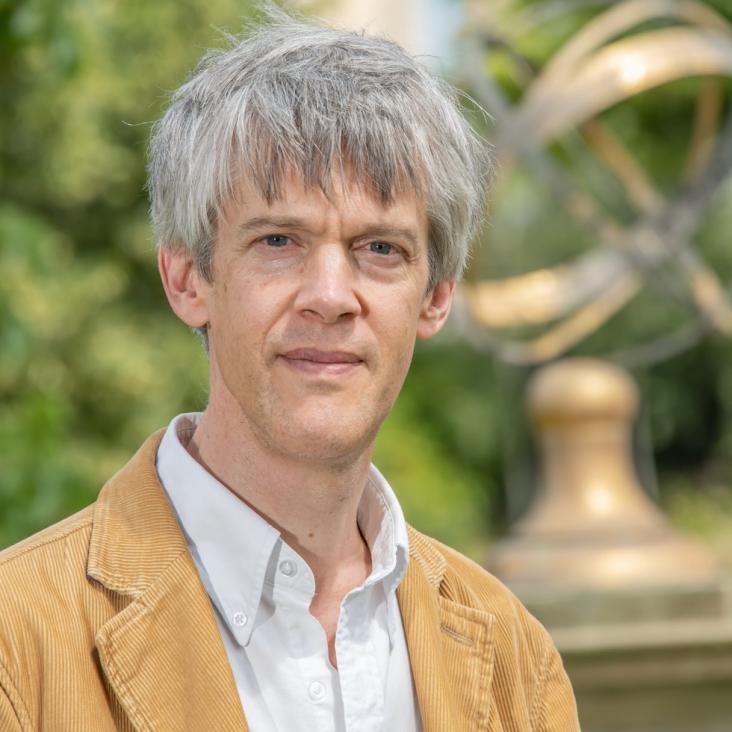Informing Conservation: Towards 14C Wiggle-Matching of Short Tree-Ring Sequences from Medieval Buildings in England
Radiocarbon Cambridge University Press (CUP) 59:3 (2017) 985-1007
Abstract:
To cut a long story short: formal chronological modelling for the Late Neolithic site of Ness of Brodgar, Orkney
European Journal of Archaeology Cambridge University Press 21:2 (2017) 217-263
Abstract:
In the context of unanswered questions about the nature and development of the Late Neolithic in Orkney, we present a summary of research up to 2015 on the major site at the Ness of Brodgar, Mainland Orkney, concentrating on the impressive buildings. Finding sufficient samples for radiocarbon dating was a considerable challenge. There are indications, from both features and finds, of activity pre-dating the main set of buildings exposed so far by excavation. Forty-six dates on thirty-nine samples are presented and are interpreted in a formal chronological framework. Two models are presented, reflecting different possible readings of the sequence. Both indicate that piered architecture was in use by the thirtieth century cal bc and that the massive Structure 10, not the first building in the sequence, was also in existence by the thirtieth century cal bc. Activity associated with piered architecture came to an end (in Model 2) around 2800 cal bc. Midden and rubble infill followed. After an appreciable interval, the hearth at the centre of Structure 10 was last used around 2500 cal bc, perhaps the only activity in an otherwise abandoned site. The remains of some 400 or more cattle were deposited over the ruins of Structure 10: in Model 2, in the mid-twenty-fifth century cal bc, but in Model 1 in the late twenty-fourth or twenty-third century cal bc. The chronologies invite comparison with the near-neighbour of Barnhouse, in use from the later thirty-second to the earlier twenty-ninth century cal bc, and the Stones of Stenness, probably erected by the thirtieth century cal bc. The Ness, including Structure 10, appears to have outlasted Barnhouse, but probably did not endure as long in its primary form as previously envisaged. The decay and decommissioning of the Ness may have coincided with the further development of the sacred landscape around it; but precise chronologies for other sites in the surrounding landscape are urgently required. The spectacular feasting remains of several hundred cattle deposited above Structure 10 may belong to a radically changing world, coinciding (in Model 2) with the appearance of Beakers nationally, but it was arguably the, by now, mythic status of that building which drew people back to itEvidence for a bi-partition of the Younger Dryas Stadial in East Asia associated with inversed climate characteristics compared to Europe
Scientific Reports Nature Publishing Group 7:44983 (2017) 1-7
Abstract:
The Younger Dryas Stadial (YDS) was an episode of northern hemispheric cooling which occurred within the Last Glacial Interglacial Transition (LGIT). A major driver for the YDS climate was a weakening of the Atlantic Meridional Overturning Circulation (AMOC). It has been inferred that the AMOC began to strengthen mid-YDS, producing a bipartite structure of the YDS in records from continental Europe. These records imply that the polar front and westerlies shifted northward, producing a warmer second phase of the YDS in Europe. Here we present multi-proxy data from the sediments of Lake Suigetsu (Japan), as evidence that a related bi-partition of the YDS also occurred in East Asia. Besides showing for the first time that the bi-partition was not limited to the North Atlantic/European region, the data also imply a climatic dipole between Europe and East Asia since the cold-warm characteristics are reversed at Lake Suigetsu. We suggest that changes in eastward moisture transport from the North Atlantic are the primary mechanism by which the teleconnection can be explained.The Cultural Project: Formal Chronological Modelling of the Early and Middle Neolithic Sequence in Lower Alsace
Journal of Archaeological Method and Theory (2017) 1-78
Abstract:
© 2017 The Author(s) Starting from questions about the nature of cultural diversity, this paper examines the pace and tempo of change and the relative importance of continuity and discontinuity. To unravel the cultural project of the past, we apply chronological modelling of radiocarbon dates within a Bayesian statistical framework, to interrogate the Neolithic cultural sequence in Lower Alsace, in the upper Rhine valley, in broad terms from the later sixth to the end of the fifth millennium cal BC. Detailed formal estimates are provided for the long succession of cultural groups, from the early Neolithic Linear Pottery culture (LBK) to the Bischheim Occidental du Rhin Supérieur (BORS) groups at the end of the Middle Neolithic, using seriation and typology of pottery as the starting point in modelling. The rate of ceramic change, as well as frequent shifts in the nature, location and density of settlements, are documented in detail, down to lifetime and generational timescales. This reveals a Neolithic world in Lower Alsace busy with comings and goings, tinkerings and adjustments, and relocations and realignments. A significant hiatus is identified between the end of the LBK and the start of the Hinkelstein group, in the early part of the fifth millennium cal BC. On the basis of modelling of existing dates for other parts of the Rhineland, this appears to be a wider phenomenon, and possible explanations are discussed; full reoccupation of the landscape is only seen in the Grossgartach phase. Radical shifts are also proposed at the end of the Middle Neolithic.Collecting the dead: Temporality and disposal in the Neolithic hypogée of Les Mournouards II (Marne, France)
, 2017


